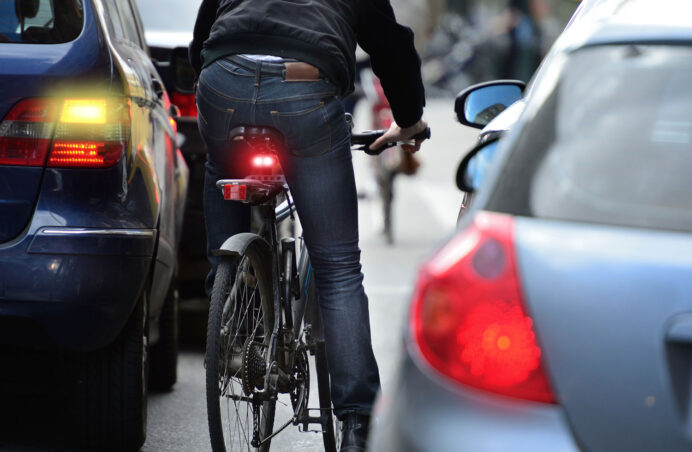
Driving is no longer the only way to get around, but many streets in the United States are built for cars and cars alone. The “complete streets” movement aims to correct this – opening up roadways for bicyclists and pedestrians and reducing the number of deadly bicycle and pedestrian accidents.
Expanding and improving infrastructure makes bicycling and walking viable modes of travel and keeps bicyclists and pedestrians safe. Roadways can be redesigned or reallocated to host vehicle traffic, bike lanes, and sidewalks. Sometimes, a simple safety cone can make a roadway much safer.
Infrastructure that can help support complete streets includes:
While many of these tactics can be implemented when a street is first being designed or during high-profile redesigns, large-scale, permanent change is not the only way to make roads safer for bicyclists and pedestrians.
The COVID-19 pandemic has been a glowing example of tactical urbanism at its finest. Tactical urbanism refers to low-cost, temporary changes designed to serve the changing needs of a community. During the pandemic, many cities have opened up their streets to bicyclists and pedestrians. Some cities have done this by temporarily closing some roads. Others have indicated “safe zones” with a few cones, signage, and barricades.
Another great example of tactical urbanism is installing planters between the street and bike lanes to shield bicyclists from speeding cars.
While temporary in nature, tactical urbanism can easily become permanent. Sometimes, a quick fix is effective and can be adopted as a long-term solution.
Traffic engineers have spent lifetimes making roads work for motor vehicles. Now, roads need to work for cars, pedestrians, bicyclists, and even public transit options.
This is a new challenge, but it is not impossible. One traffic engineer explains just how much difference a “complete street” can make on a community. When people walk and bike more often – and feel safe doing so – urban areas come to life. Increased foot traffic opens opportunities for dining, window shopping, and more.
Additionally, when people can access their communities without getting in a vehicle, they have a greater sense of belonging and wellbeing. Having pedestrian and bicycle-friendly streets can make communities more livable – even for people who primarily drive and never set foot on a bicycle.
Change can be difficult, but it is possible – and may even be easy to do. The COVID-19 pandemic has shown us how our streets can adapt to our needs.
Nevertheless, there is a long way to go until roadways are safe and functional for bicyclists and pedestrians. If you are harmed by a negligent driver in the meantime, Casey Law Offices, S.C. is here for you.
We take bicycle and pedestrian accidents seriously, and we have more than 25 years of experience helping victims recover.
Call us at (414) 272-5564 or contact us online to discuss your case during a free consultation.
We are available 24/7 and ready to help you move forward.
My case was handled very professionally by him and his staff. Even when my case resolved and party tried to delay payment, Mr.Casey stayed on them until the end and my case closed.
John helped me a great deal with my automobile accident claim. He was very knowledgeable and really responsive to my concerns. I received an excellent settlement. I just recommended him to a friend.
Attorney Casey helped me tremendously in a time of great need. He’s down-to-earth, friendly, and very knowledgeable. I would definitely recommend him to others.
I hired Attorney Casey to represent me in a complicated contract dispute. Despite the complexity of the language in the 15-page contract, Attorney Casey was able to negotiate a very fair settlement for me without my having to appear in court. The process was stress-free; working with his staff was easy — they communicated clearly and timely with me. Best of all, the dispute was resolved in a matter of a few months, not more than a year as I had predicted.
I hired Attorney Casey to represent me after I had been seriously hurt in a car accident and was unable to work. I found Attorney Casey to be responsive, tenacious and unwavering in his commitment to secure the maximum amount in damages for me. The six-figure settlement has helped me pay my medical bills and return my life to normalcy. I highly recommend Attorney Casey and the team at Casey Law Offices.